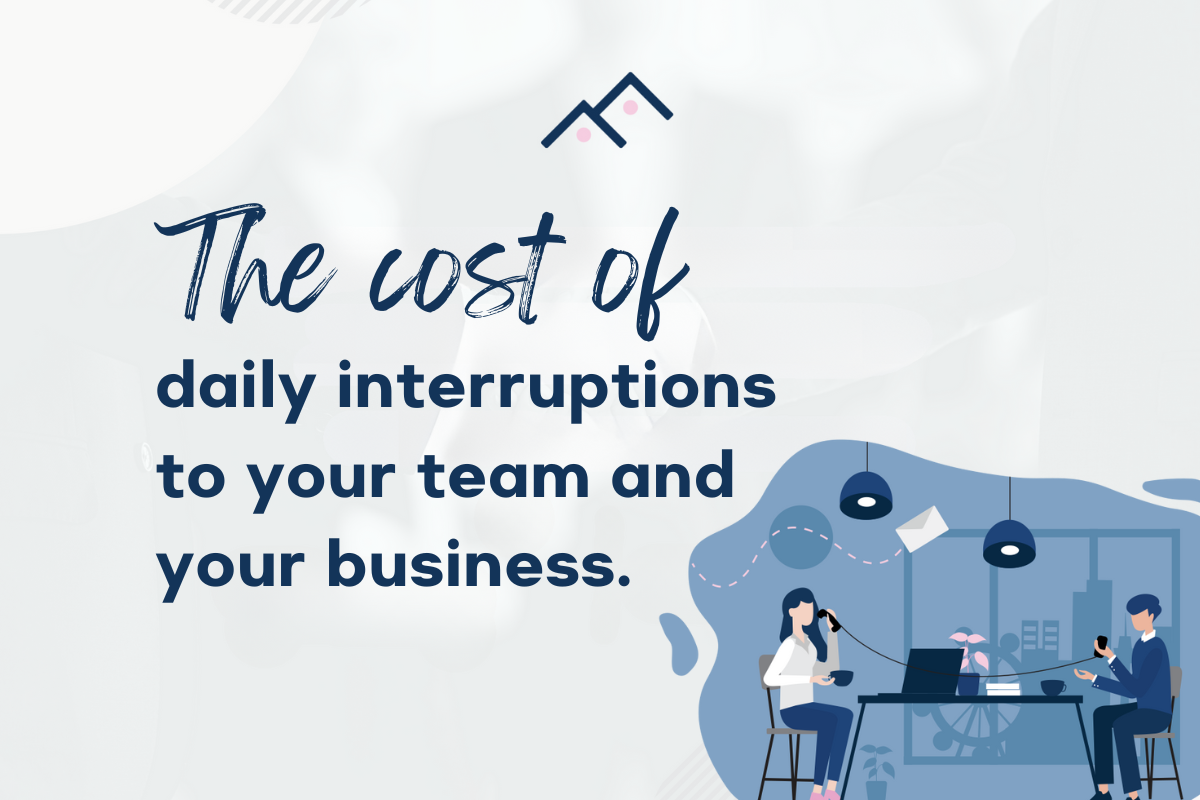In our latest Client Spotlight, we’re excited to introduce Kelly Young and her business, Estate...
What daily interruptions are costing your team and your business

The conveyancing industry in 2024 is fast-paced and, at times, incredibly stressful. We see many business owners who have yet to fully realise the transformative power of technology to streamline their operations, enhance their team’s efficiency, and, ultimately, improve their business’s bottom line.
Having sat with hundreds of conveyancers, it is apparent that much of the challenge lies in the day-to-day interruptions that conveyancing staff face – phone calls, client walk-ins, urgent emails and software outages. These interruptions significantly disrupt concentration and elevate stress levels among staff members. While seemingly short, research has shown that they are major productivity killers and can lead to increased errors, missed deadlines, and heightened employee burnout.
Let’s consider a typical scenario in a conveyancing office…
A conveyancer is deeply focused on balancing a matter for settlement when an urgent call from a client breaks their concentration and takes their attention to another matter. This disruption not only delays the task at hand but also requires a significant mental effort to regain focus, further exacerbating the employee’s stress and overwhelm.
The cumulative effect of these interruptions throughout the day can be profound. Longer working hours and a stressed workforce impact client satisfaction and the business’s reputation.
What does the research say about interruptions?
A University of California study examining the nature of interruption and fragmented work found that the mental and cognitive burden on employees juggling multiple tasks suggests a need for better tools and strategies to support task management. The authors surmised that technology can help workers maintain continuity in their work and more effectively manage interruptions, resulting in the potential for improved productivity and well-being in the workplace.
In the context of conveyancing, where precision and timely communication are necessities, the cost of interruptions extends beyond just the immediate loss of productivity. They also contribute to a higher error rate, increased operational costs, and, arguably most importantly, a deteriorating workplace culture that can affect employee retention and well-being.
So, what can we do about this issue?
Conveyancing business owners should look to the adoption of technology as a viable solution to these issues. Automation tools and software streamline repetitive tasks and offer their staff a more organised and efficient way to manage client communications and documents. This technological intervention can significantly reduce the need for manual input.
The result? Fewer opportunities for interruptions, allowing staff to concentrate on higher-value tasks that require their expertise and judgment.
When we look at the tools and technology available to conveyancers, modern solutions are equipped to overcome traditional limitations, such as software outages and are conducive to the growing trend towards flexible work arrangements. Cloud-based systems offer the advantage of remote accessibility, enabling team members to work flexibly and balance their personal well-being with professional responsibilities.
What happens when we address work fragmentation and interruptions?
In acknowledging the significant toll that day-to-day interruptions take on your operations and on your team, you can take the first step to improve your business’s bottom line and enhance your team’s wellness.
Integrating technology into conveyancing practices is about embracing a culture change that values efficiency, employee well-being, and client satisfaction. Business owners who recognise the intangible benefits of technology will be better equipped to foster a healthier, more productive work environment for their employees.
Investing in the right technological solutions can reduce disruptions, streamline your processes, and create a more efficient and happier workplace.

.png?height=200&name=Client%20Spotlight%20Blog%20Header%20(4).png)
.png?height=200&name=Client%20Spotlight%20Blog%20Header%20(8).png)
.png?height=200&name=Why%20mental%20wellness%20matters%20MOST%20(and%20how%20to%20support%20your%20team).png)